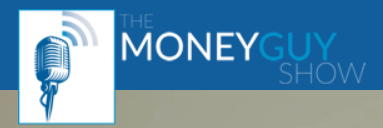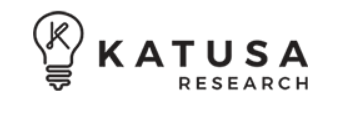ALERT: Their Secret Plan To Revalue Gold Was Just Leaked
BRICS+ Are Big Enough To Dethrone The Dollar | Andy Schectman
Has Gold Peaked? This Chart Tells a Different Story | Mike Maloney & Alan Hibbard
FTM 489: The Pivot Beneath The Panic
"Trump Is Betting On Growth!" - Big Beautiful Bill Sparks MELT DOWN Over Trump Tax Cuts
The FOMO Boom—Then the Blowback - Andrew Horowitz #6294
The Real Science Behind Building Wealth
Why Bitcoin Treasury Stocks Explode (missing signal)
Solar Goes 24/7 Today—Have You Met Its Toll-Collector?
Netflix was never about red-envelope DVDs; those were just the decoy.
The payday came the instant tech let them flip a switch to streaming—and a sleepy mail-order shop became a $500 billion titan almost overnight.
Solar is at that exact switch-flip now.
Panels were the envelopes.
Sub-$100/MWh batteries just turned them into a 24-hour power network.
Because batteries—the streaming of solar—are now feasible.
For the first time, that makes “Solar+”—solar and batteries together—possible…
And solar+ produces electricity that’s ultra-cheap, and crucially, always on tap.
It finally cracks solar’s intermittency problem—day or night, power is there when you need it.
Companies that have been waiting for this moment are moving at light speed.
In 2020, battery installations were less than 5% of solar installations.
In 2025, they’re expected to hit 60%—or the equivalent capacity of all solar installed in 2023.
The Western World Is Waking Up to Gold
By Sean Michael Cummings
Two years ago, one of America's biggest hedge funds bailed on gold...
Less than 1% of Bridgewater Associates' fund was invested in the metal. And by August 2023, that investment fell to zero. Bridgewater sold all of its gold shares, a transaction worth about $163 million.
The timing couldn't have been worse.
Since Bridgewater announced its gold sale, the metal has surged 77% – more than doubling the return of the S&P 500 Index. That would have turned Bridgewater's initial investment into about $289 million in less than two years.
Bridgewater misjudged the gold market. But as I'll discuss in a second, so did most of the Western world...
Today, that's changing. After missing the boat for years, North American and European investors are waking up to the opportunity in gold. And that could push prices higher than anyone expects...
The GENIUS Act: How to Secure Big Returns in Crypto
FTM 488: On The Edge Of War (Israel-Iran, Genius Act, FOMC)
Neocons Dragging Trump into WWIII – Martin Armstrong
By Greg Hunter’s USAWatchdog.com
Two weeks ago, legendary financial and geopolitical cycle analyst Martin Armstrong was signaling a big turn toward war. We all know Ukraine is out of control with no peace deal in sight, and now the Middle East is blowing up too. Armstrong says, “I think Trump has been kind of snookered into this . . . Netanyahu knew he could not get the nuclear. Now, he says we are losing because they have not been able to achieve that. So, Netanyahu says President Trump, please go in and attack Iran and eliminate that, which is World War III. . .. Iran is not by itself. We have to consider what is going to take place here. . .. I am concerned this drags in Russia and also China. . .. You have Zelensky over there conspiring with Britain to use an old Soviet torpedo to sink an American ship so they can blame that on Russia. You have the same nonsense in the Middle East so they can create a false flag there to say Iran attacked American forces. They are trying to drag Trump into World War III. These neocons are horrible people. They have no humanity, and they do not care about how many people die.”
Bitcoin price targets mushroom as traders bet on $140K+ this bull run
By William Suberg
From golden crosses to ascending wedges, Bitcoin traders are increasingly optimistic on the future of Bitcoin price action, even as the market tracks sideways.
Bitcoin traders eye new all-time highs, which include $270,000 by October.
The bull run is far from over, they agree, with BTC price due a major comeback.
Doubts persist over the impact of the next Bitcoin bear market.
traders still see new all-time highs and even $270,000 this bull market.
The latest BTC price forecasts from popular market participants agree that BTC/USD is due to head much higher than its current record.
Bitcoin traders agree: New all-time highs will come
Bitcoin may be consolidating just above $100,000 after a slew of macroeconomic and geopolitical surprises, but the consensus among traders is anything but bearish.
Far from the bull market being over, many see Bitcoin preparing for a fresh period of price discovery.
“Bitcoin is trending upward in an Ascending Broadening Wedge,” popular trader Alan Tardigrade concluded in part of his latest analysis on June 15.













